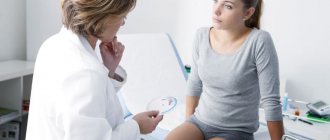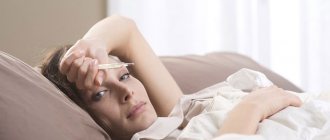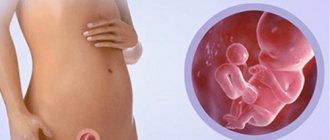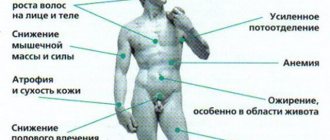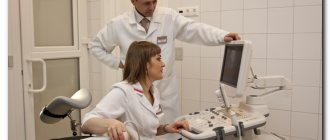Estradiol: main tasks in the female body
Estradiol is essential for women for the normal functioning of both the reproductive system and the entire body. For example, estradiol helps to activate the contractile function of the myocardium, strengthen vascular walls and reduce cholesterol levels in the blood.
This hormone also increases the tone of the smooth muscle fibers of the intestinal wall and bladder, which improves the functioning of these organs.
In addition to smooth muscles, estradiol has a positive effect on the activity of skeletal muscles, promoting their regular contraction and relaxation. Thus, the endurance and resistance to stress of the human body increases, and the body becomes elastic.
Estradiol is rightly called the hormone of good mood, because thanks to it we have positive emotions. Depressive states are often observed in individuals with estradiol levels below normal.
In addition to a good mood, estradiol helps women be beautiful and sexy. This is explained by the fact that this hormone allows the appearance of secondary sexual characteristics, such as round breasts, steep hips, thin waist, smooth skin, soft voice, etc. The significant importance of estradiol in the formation of libido is also noted.
Numerous medical studies have shown that estradiol helps maintain a fit body shape and weight. For example, in women of menopausal age, as a result of a decrease in the level of estradiol in the blood, the problem of excess weight and brittle bones often arises.
Estradiol plays an important role in creating favorable conditions for fertilization, loosening the endometrium so that successful implantation of the zygote occurs.
Characteristics of the hormone
Estradiol belongs to the group of estrogens and is the most active sex hormone. Most of it is synthesized by the ovaries, and a small amount is produced by the adrenal glands. In a woman’s body, the hormone is responsible for the following functions:
- formation of reproductive organs, secondary sexual characteristics and normalization of the menstrual cycle;
- preparing the uterus for bearing a child: activation of blood flow, dilation of blood vessels in the mucous membrane, thickening of the endometrium;
- improvement of blood clotting;
- strengthening vascular walls;
- formation of bone tissue (mainly tubular bones);
- normalization of sodium and water balance, cholesterol levels;
- regulation of metabolic processes in bones and muscles, sexual desire and libido.
In addition, estradiol affects the condition of the skin, hair and nails, the psycho-emotional background of a woman, physical activity and endurance.
Estradiol is also present in the male body - it is produced by the testes, adrenal cortex and peripheral tissues, but in much smaller quantities than in women.
The concentration of estradiol in the female body is constantly changing, depending on the phase of the menstrual cycle and time of day, and the highest concentration of the substance is observed in the blood of pregnant women. The peak production of the hormone occurs during the daytime (three to six hours of the day), after which the levels decrease.
The norms for the content of this substance in non-pregnant women of reproductive age are as follows:
- first phase of the menstrual cycle - 12.5-350 pg/ml;
- period before ovulation - 86-750 pg/ml;
- second phase - 30-450 pg/ml.
The maximum level of estradiol is observed at the time of follicle maturation, as a result of which the production of other hormones increases. A surge of hormonal activity leads to the rupture of the follicle and the release of the egg, which begins to move towards the uterus.
When conception occurs, the concentration of estradiol in the second phase gradually increases, and subsequently its level depends on the duration and characteristics of the course of pregnancy. In the second trimester, the function of hormone production is taken over not only by the adrenal glands and ovaries, but also by the placenta, and a decrease in estradiol levels is observed about a week before birth.
To check the level of the hormone in the body, a woman is recommended to take a blood test - blood from a vein.
The optimal time for collecting a sample of biomaterial is the 2-3rd day of the cycle; to obtain a complete picture, the study is repeated on the 20th day.
Blood is donated on an empty stomach; a few days before the procedure, it is necessary to avoid heavy physical activity, smoking and alcohol, and, if possible, stop taking medications.
Reference values (norms) of estradiol in a blood sample during testing can differ significantly from each other in different medical institutions, so only a doctor can draw conclusions about an increase or decrease in its concentration.
Some diseases lead to an increase in estradiol in women. If estradiol is elevated in a woman, this may indicate the presence of diseases such as ovarian cysts, liver cirrhosis, and even hormonal tumors.
Read here what level of progesterone a pregnant woman should have in her blood.
The substance estradiol valerate is used in hormonal preparations, in particular in oral contraceptives. You can read about the main purpose of such drugs in this article.
Causes and treatment of deviations
The rate of the hormone estradiol in women should not decrease or increase. If the analysis shows deviations in any direction, it is necessary to conduct a comprehensive examination to determine the reasons and carry out appropriate treatment to stabilize estradiol in women.
Level above normal
Estradiol may increase due to the following reasons:
- severe liver diseases, including cirrhosis;
- overweight, obesity;
- the presence of malignant tumors in the body;
- regular consumption of alcoholic beverages, alcoholism;
- thyroid dysfunction;
- development of inflammatory processes in the uterus, ovaries and appendages;
- infectious diseases of the urinary system (in this case, the analysis will show a temporary increase in the hormone).
To restore hormonal levels and normalize estradiol levels, it is necessary to eliminate the cause of the increase in its level. Prescribed medications that a woman should take:
- Mastodinon is a medicine based on herbal ingredients. Its initial purpose is the treatment and prevention of mastopathy. It is recommended to take it if a high level of E2 provokes pain and discomfort in the mammary glands and heavy menstruation.
- Orgametril. The basis of the drug is gestogen - a hormonal substance of synthetic origin. It stops ovulation and is therefore used as a contraceptive.
- Tamoxifen - used in the treatment of breast cancer. Long-term use of the medication at a lower dosage than the standard helps reduce the amount of E2.
- Indole - helps restore the balance of hormones, making their concentration stable and balanced. Indole, intended for the treatment of the initial stages of cancer, is taken for 3-6 months.
In addition to drug therapy, maintaining a correct lifestyle plays an important role in restoring estradiol. It is necessary to give up smoking and alcohol, maintain a proper, balanced diet and be sure to exercise.
In many cases, an increase in the hormone is caused by the fact that a woman leads a passive lifestyle, suffers from excess weight, obesity. If excess body weight is the only reason for the increase in the amount of the hormone, diet and exercise will help normalize it. In order for physical activity to give a positive result, you need to follow a number of recommendations:
- The intensity of the load should be average. The duration of the workout is no more than 30 minutes. It is recommended to choose those disciplines that use all muscles: yoga, swimming, running, cycling.
- Classes should be fun. During training, it is necessary to exclude stressful situations.
- When playing sports to lose weight, you must not forget about the need to simultaneously build muscle fibers.
No specific nutrition is required to normalize the hormone. It is important that the diet is correct, balanced, and that the products are low-fat and natural.
To reduce estradiol levels, decoctions based on herbs and medicinal plants can be used:
- Cetraria, or Icelandic moss - it is recommended to use a decoction of the plant in the presence of fibroglandular mastopathy.
- Cuff - the plant helps treat cancer, normalize the functioning of the endocrine system, and eliminate hormonal imbalance.
- Peruvian maca - contains vitamins C and B, trace elements: potassium, iodine, zinc and manganese. A decoction of Peruvian maca helps relieve pain during menstruation and restores the psycho-emotional background. The plant is a natural antioxidant that cleanses the body of toxic substances.
Important information: The difference between free and total testosterone in women and which one to give to a man (table)
All decoctions are prepared according to the same recipe: 1 tbsp. l. ingredient, pour 200 ml of hot water, leave for 20-30 minutes, strain.
Taking medications, a healthy lifestyle, a balanced diet, and traditional methods will help stabilize the estradiol level, which will meet the norm.
Estradiol and the menstrual cycle: relationship
Estradiol is synthesized and released into the blood throughout the entire monthly cycle, only in different quantities. Its synthesis occurs in the ovaries, adrenal cortex and adipose tissue, and during pregnancy - in the fetal place.
During the follicular phase of the monthly cycle, estradiol is produced in minimal quantities, under the influence of follicle-stimulating and luteinizing hormones. Before the ovulatory phase, the amount of the hormone increases three times, after which it decreases, reaching a minimum level before menstruation.
Estradiol can be converted into estrone and estriol throughout the monthly cycle.
Also, the level of estradiol in women changes with every hour of the day. The largest amount of the hormone is synthesized between 15 and 18 hours of the day, and the smallest - between 24 and 2 am.
Indications for analysis
Polycystic ovaries - a reason to get examined
Indications for analysis in women are:
- Any irregularities in the menstrual cycle (especially spotting bleeding) - determination of estradiol levels is most often included in a comprehensive endocrinological study;
- Endometriosis;
- Ovarian cysts and tumors;
- Polycystic ovary syndrome;
- Condition after abortion, including medical abortion, to control the restoration of the menstrual cycle;
- Pregnancy in women at increased risk due to existing chronic diseases, as well as in those who have had miscarriages;
- The need for careful selection of contraception - in young women, adolescents, and those prone to severe adverse reactions to hormonal drugs.
Regular (once a year) testing to determine estradiol levels can be recommended for all women over 45 years of age.
This analysis makes it possible to accurately predict the onset of menopause, which will help the doctor prescribe health-maintaining medications in advance.
Reasons for decreased estradiol levels
In women, low estradiol levels are associated with many reasons:
- stressful situations;
- sudden weight loss;
- age after 40 years, when menopause begins;
- disturbances in ovarian activity;
- disorders at the genetic level;
- long-term use of certain medications.
Stressful situations
If we look at the statistics on the birth rate of the war years, we have seen a sharp decline recently. The main reason for this phenomenon is not the absence of the male population, but the fact that under stress, the female reproductive glands do not produce hormones , including estradiol. This leads to cycle disruption and the impossibility of conception.
Weight loss
Most girls and women try to control their body weight by resorting to all kinds of diets. The diet options they choose for quick weight loss lead to serious metabolic disorders. Against the background of low estradiol, women experience a deterioration in their general condition, the cycle is disrupted, and pregnancy does not occur.
Climax
With age, decreased estradiol in the female body is normal. Its deficiency is associated with cessation of ovarian activity, dysfunction and replacement of gonad tissue. Women should perceive this phenomenon as a natural physiological process and prepare for it psychologically. Along with menopausal changes, osteoporosis may develop and problems with blood pressure may arise.
Ovarian dysfunction
Any disease of the female reproductive glands causes a disruption in the production of hormones. Lack of estradiol is often associated with well-known syndromes:
- exhausted ovaries;
- resistant ovaries.
The causes of these phenomena are not fully understood even with the modern level of development of medicine. A condition where estradiol is low for a long time against the background of these syndromes often leads to infertility. With the help of drug therapy, the menstrual cycle is restored, but conception is possible only with the use of a donor cell.
Genetic disorders
Disorders at the genetic level cannot be treated and cause irreversible changes in a woman’s body:
- no menstrual bleeding;
- inability to conceive a child;
- restructuring of the figure according to the male type.
The only solution to the problem is hormonal therapy , but it is aimed only at maintaining the woman’s health.
Visible symptoms
For estrogens of female hormones, the symptoms of deficiency are quite characteristic, so they can be noticed independently, which is a reason to consult a doctor.
USEFUL INFORMATION: Periods after Vizanne
At the beginning of life, signs of estrogen deficiency can be observed, such as late formation or complete absence of secondary sexual characteristics, due to delayed sexual development. Girls may develop uncharacteristic masculine features - facial hair, developed muscles, a muscular body, etc. If menstruation comes very late or does not appear at all, then infertility may develop without timely treatment.
The most noticeable changes in estrogen deficiency for women of reproductive age are negative changes in appearance:
- fragility and dull hair color;
- deterioration of breast shape;
- dryness, loss of elasticity, thinning and flaking of the skin;
- the appearance of wrinkles;
- brittleness and splitting of nails.
The following pathological changes in the body may also indicate the presence of a lack of estrogen in women:
- the appearance of one or many new moles, as well as papillomas;
- changes in blood pressure;
- Bad mood;
- vaginal dryness;
- bloating;
- frequent occurrence of bladder infections;
- violation of thermoregulation, the characteristic signs of which are a rapid change in sensations of cold and intense heat in the body;
- inability to get pregnant;
- decline
Combined estrogen-progesterone deficiency manifests itself in severe pain due to irregular periods, as well as infertility. Lack of estrogen can cause rapid memory deterioration. Sometimes this is evidenced by heart pain, poor coordination, and loss of concentration. Many of the symptoms are similar to those seen with hypothyroidism, so a thyroid test will be required to make a correct diagnosis.
For women over 40 years of age, weight gain for no apparent reason is a concern, as the diet remains the same. This is due to the fact that by this age the intensity of estrogen production decreases, and the body begins hormonal changes. It should be borne in mind that if prolactin is elevated, this is also fraught with obesity.
Against the background of estrogen deficiency, due to loss of calcium, a woman’s bone strength decreases, which often leads to the development of osteoporosis. Most often, this condition occurs after 50 years, when estrogens are no longer produced during menopause according to physiologically normal parameters. Whether treatment through maintenance hormonal therapy is necessary in this case is decided by the doctor.
Symptoms of low estradiol in women
If estradiol is low in women, such a deviation cannot go unnoticed. First of all, there are disturbances in the functioning of the reproductive system. The possibility of egg fertilization is significantly reduced. Even if conception occurs, the patient will have a high probability of miscarriage during the first trimester.
But such a violation affects not only the ability to get pregnant. Low estradiol levels in women are also accompanied by the following symptoms:
- frequent shifts in the menstrual cycle;
- severe pain during menstruation;
- severe dryness or burning in the vaginal mucosa;
- decreased libido;
- feelings of lack of strength;
- rapid fatigue.
These are not all the symptoms of low estradiol in women. In addition to the ailments described above, patients with a deficiency of this hormone may complain of:
- frequent migraine attacks;
- a sharp decrease in body weight;
- surges in blood pressure, when its increase is suddenly relieved by a sharp drop in blood pressure readings.
One of the characteristic symptoms of low estradiol in women is a tendency to frequent fractures. With a lack of this substance, bone tissue becomes fragile, which is why even relatively minor injuries can cause damage to its integrity.
Important! A good reason to contact a gynecologist and get tested for estradiol is the absence of menstruation for several menstrual cycles. This is especially necessary if a woman plans to become a mother in the near future.
The symptoms that estradiol is low in women during pregnancy planning are especially clear. The inability to conceive a child may not yet be a consequence of the development of secondary infertility, but it should already alert the patient and force her to visit her gynecologist.
If a blood test reveals that FSH is increased and estradiol is decreased, this will be the main reason for the inability to get pregnant. An increase in follicle-stimulating hormone negatively affects the maturation of the egg, and against the background of a decrease in estradiol levels, this process only worsens. Therefore, before planning a conception, the patient will need to undergo therapy to normalize hormonal levels.
What does low hormone levels affect?
In addition to emotional manifestations and general malaise, a lack of estradiol also affects metabolic processes, the functioning of the circulatory system, and the condition of the bones. With a long-term decrease in hormones, the following occur:
- obesity;
- diabetes mellitus with signs of thirst, frequent and excessive urination, bouts of hunger;
- osteoporosis - a decrease in bone mineral density, porosity, fractures due to minor trauma (typical places - vertebrae, neck, radius), often leading to disability;
- muscle weakness;
- decreased production of thyroid hormones, slowed metabolism;
- increase in cholesterol and triglycerides in the blood, progression of atherosclerosis, risk of stroke and heart attack;
- rapid skin aging;
- destruction of articular surfaces, making movement difficult;
- deterioration in brain function; in the elderly, due to decreased blood flow, the likelihood of dementia (senile dementia), parkinsonism (hand tremors), and Alzheimer's disease increases.
How to get tested
The examination for hormonal concentrations in the blood includes preparation and the analysis itself. An estradiol test is done to diagnose and effectively treat any disease associated with hormonal levels.
Do not eat for 12 hours before the test
To prepare for the analysis, you need to:
- Stop drinking alcohol for 5-7 days.
- Do not engage in physical activity for 24 hours.
- Do not smoke 24-36 hours before the test.
- Minimize stressful situations or any tension within 12-24 hours.
- Last meal at least 12 hours before.
- Before the procedure, do not eat food and calm down as much as possible.
The analysis is carried out by collecting venous blood, usually on days 6-7 of the menstrual cycle. To confirm the diagnosis or to further inform the specialist, the sampling will be carried out on day 20.
When is an estradiol test needed?
- For menstrual irregularities
- For endocrine infertility
- For disorders of puberty
- To diagnose fetal pathologies
How to donate blood for estrogens?
The test must be taken in the morning (from 8 to 11), on an empty stomach. The day before, it is advisable to avoid excess food and heavy physical activity. If there are no special instructions, then it is better to choose days 2-4 of the menstrual cycle for blood collection.
You should not prescribe this test yourself. A large spread of normal values will not allow you to correctly assess the results, which will lead to unnecessary worries and worries. Only the attending physician can assess the hormonal profile.
Purpose of the triple test
This is a mandatory blood test of a pregnant woman between 15 and 20 weeks, which is carried out to identify possible pathologies and genetic abnormalities in the unborn child. The triple test has this name because the concentration of three important substances is determined:
- AFP – alpha-fetoprotein;
- hCG – human chronic gonadotropin;
- EZ – free estriol.
Deviation from the norm of AFP may indicate the presence of Down syndrome in a child, disorders of the development of physiological systems. A downward change in hCG (as well as low progesterone ) may be evidence of a threat of miscarriage, fetal death, or non-developing pregnancy. An underestimated EZ indicates a threat of miscarriage, intrauterine infection, anemia in the fetus, and impaired physical development of the unborn child.
A woman should be alert to symptoms that may indicate low estradiol levels. A low concentration of this hormone can lead to irreversible changes in a woman’s body and permanently deprive her of the opportunity to become a mother.
Blood test for estradiol
In a blood test, the level of this hormone is usually displayed in picograms per milliliter (pc/ml), but this indicator can also be expressed in picomoles per liter (pmol/l).
A blood test for estradiol is prescribed by specialists in such cases as:
- hormonal imbalance in the body, as a result of which the monthly cycle is disrupted;
- lack of ovulation;
- infertility;
- disruption of the sex glands;
- periodic uterine bleeding not associated with the menstrual cycle;
- pronounced manifestations of premenstrual syndrome;
- malfunction of the pituitary gland;
- polycystic ovary syndrome;
- fragility of bone tissue;
- ovarian neoplasms;
- adrenal neoplasms;
- preparation for in vitro fertilization.
Blood for testing for estradiol is taken strictly from the 4th to 6th day of the menstrual cycle. The control analysis is carried out in the period from 20 to 21 days of the cycle.
In order for the result of a blood test for estradiol to be as objective as possible, when preparing for the study, you must adhere to the following recommendations:
- 2-3 days before the study it is not recommended to transfer;
- 24 hours before blood sampling, limit physical and mental stress;
- Avoid having sex 24 hours before;
- 24 hours before blood sampling, smoking and drinking alcohol are prohibited;
- If you are taking any medications, notify the doctor who ordered the tests. In this case, temporary discontinuation of the drugs may be considered, since they may distort the results of the study for estradiol;
- The last meal should be no later than 12 hours before blood sampling. The analysis is carried out strictly on an empty stomach.
The optimal time for blood sampling for research is 8-11 am. Blood is taken from the cubital vein in an amount of 5-10 ml.
Waiting for the result of a blood test for estradiol can take three to seven days. In emergency cases, the result can be ready five hours after blood collection.
Estradiol during pregnancy
Let us note once again that estradiol levels during pregnancy are higher than in non-pregnant women.
In the early stages of pregnancy, the amount of estradiol in the blood of the expectant mother corresponds to normal levels, but as the uterus enlarges, it gradually increases.
The highest level of this hormone is observed in the third trimester of pregnancy. 5-6 days after birth, estradiol levels gradually return to normal.
The role of estradiol during pregnancy is that it promotes normal fetal development and prevents miscarriage or premature birth. This hormone also strengthens the walls of blood vessels in the birth canal to avoid ruptures during childbirth.
Low estradiol and conception
The concentration of the female hormone in the blood fluctuates greatly, depending on the phase of the menstrual cycle, the woman’s health status and even the time of day. The highest level is expressed at the time of follicle maturation . For a woman’s body, this is a signal that she needs to prepare for conception.
This hormonal signal enters the brain, which instructs the pituitary gland to actively synthesize luteinizing hormone (LH) and follicle-stimulating hormone (FSH) , which launch the reproductive system into active work.
At the maximum concentration of LH and FSH, the follicle ruptures, and a mature egg, ready for fertilization, is released and moves to the uterus. With a low concentration of the hormone, the follicle does not rupture, and the process of fertilization of the egg is impossible.
What are the dangers of low estradiol levels?
The development of osteoporosis - the danger of low hormone levels
Low levels of estradiol in women of childbearing age lead not only to impaired reproductive function of the body (inability to conceive and bear a child), but also to multiple health problems. When estradiol levels are low, the following may occur:
- The development of endometriosis due to incomplete rejection of the upper layer of the endometrium during menstruation.
- Decreased iron levels in the blood, impaired transport of hormones (especially thyroid thyroxine).
- An increase in “bad” cholesterol in the blood as part of low-density lipoproteins, a decrease in high-density lipoproteins, which help to avoid atherosclerosis.
- Declining sexual activity, atrophy of the female genital organs, primarily the vaginal mucosa.
- Severe pain in the pelvic area, the appearance of uterine bleeding.
- The development of osteoporosis - fragility of bone tissue, tendency to fractures.
- Early menopause (before the age of 45).
Depending on age
Estradiol during adolescence is responsible for full sexual development. The hormone promotes normal cholesterol levels and activation of bone tissue growth. During adolescent development, it ensures the gradual transformation of girls' genitals into fully mature ones.
| Woman's age | Estradiol norm pg/ml |
| From birth to one year | 0 |
| From 2 to 3 years | From 0 to 22 |
| From 4 to 6 years | 22 |
| From 7 to 12-14 years | From 22 to 20 |
| From 12-14 to 55 years old | From 57 to 480 |
| Over 55 years old | From 18 to 85 |
A decrease in hormone levels during menopause is normal. This occurs due to the decline of reproductive function and changes in the functioning of all body systems. Estimation of the estradiol norm during this period depends on age, duration of the climatic period, and the presence of diseases.
Why and how to correct indicators
A gynecologist-endocrinologist will tell you how to lower estradiol levels. If no tumors are found, then the numbers can be corrected using the following measures:
Normalization of the gastrointestinal tract. Introduce foods rich in plant fiber, as well as prebiotics, into your daily diet. Diet therapy
Reduce the amount of carbohydrates consumed, increase the intake of proteins, fatty acids, vegetables and fruits. Physical activity is important to lose excess weight. Taking phyto-estrogens - reduces hormone production in the ovaries. Vitamin therapy - reduces the effect of substances from which estradiol is synthesized.
The chronic form requires the use of drugs that inhibit estrogen synthesis - Tamoxifen, Raloxifene, Clomiphene, Fulvestrant.
If we talk about estradiol, the following activities will help increase its levels:
- Hormonal therapy - Duphaston, Proginova, Estroferm, Estraderm TTS 25. During menopause - Klimaktoplan, Klimaton. The patient can choose the form of the drug that is convenient for herself (treatment with tablets, injections, patches, gels).
- Herbal medicine – suitable for women who are afraid of the side effects of hormonal drugs. You can use medicinal plants (oregano, clover, licorice, sage, linden flowers and mistletoe).
- Enrichment of the diet with vitamins and microelements.
- A woman’s high-quality sex life with a trusted partner.
Pathology must be treated in a timely manner, only under the supervision of a specialist and laboratory diagnostics over time. Even one missed year can lead to serious consequences for vital organs and systems.
Taking medications
If a woman’s health condition requires long-term drug treatment, she has low estradiol. Such drugs include chemotherapy drugs, danazol, cimetidine, nandrolone, mifepristone.
How to increase hormones without drugs
Before taking medications or using traditional methods, you must undergo an estradiol test. In nature, there are a huge number of varieties of herbs that contain a natural estrogen substitute - phytoestrogen. They are used in the form of teas and tinctures.
Linden flower tea may help increase hormone levels in the blood
The most popular are:
- linden color;
- sage;
- oregano;
- hop;
- licorice;
- clover;
- sweet clover
Before taking any medicinal plant, you should consult a specialist. You can also consult a nutritionist, since dieting or avoiding certain foods can lead to a decrease in estradiol.
This video talks about female sex hormones:
Decreased hormone levels and possible complications
Before engaging in treatment, the doctor is obliged to conduct a comprehensive examination of the patient. First, a clinical blood test is performed to determine the content of estradiol in a woman’s body. It is required for:
- assessment of the functioning of the organs of the reproductive system (in particular, the ovaries);
- finding out the reasons for the long absence of menstruation or shifts in the menstrual cycle;
- preventive monitoring of the follicle development process as part of in vitro fertilization;
- determining the causes of delays in puberty in adolescent girls;
- finding out the reasons for the early onset of menopause.
Only if the reasons why women have elevated estradiol are accurately determined will the doctor be able to give specific recommendations regarding further treatment.
Features of therapy
Hormonal disorders are the responsibility of an endocrinologist. But since in this case we are talking about high estradiol in women, which is a sex hormone and therefore directly affects the reproductive system, you can also turn to a gynecologist for help.
First, the cause of the hormonal imbalance is eliminated, and only then, if necessary, additional treatment is carried out aimed at normalizing the hormone level. So, how to lower estradiol in women? For this purpose, you first need to:
- improve the functioning of the gastrointestinal tract;
- direct efforts to get rid of extra pounds;
- take a course of vitamin therapy;
- completely cure acute liver diseases, or transfer chronic pathologies into a phase of long-term remission.
There are other, no less effective, ways to reduce estradiol in women. These include:
- following a gentle low-carbohydrate diet with a predominance of Omega-3 fatty acids;
- complete abstinence from drinking beer;
- adequate distribution of time for rest and physical activity;
- sufficient consumption of foods containing macro- and microelements, antioxidants.
Possible consequences of deviation
Hormonal imbalance is dangerous in any case, and it does not matter in which direction the deviation from the norm is observed. If estradiol is higher than normal, this can lead to the following health problems in women:
- serious disturbances in the psycho-emotional state, including prolonged depression;
- intense bleeding that can cause the development of iron deficiency anemia;
- increasing the likelihood of developing oncological processes in ovarian tissues;
- reproductive function disorders up to the development of secondary infertility.
Based on the above complications of hyperestrogenism, we can draw an unambiguous conclusion: such a deviation requires mandatory treatment. It is especially dangerous if it occurs against the background of pathological processes. Ignoring their signs can sometimes be fraught with dangerous consequences not only for a woman’s health, but also for her life!
Features of the treatment of hypoestrogenism
How to increase estradiol in a woman’s body? You can do this in several ways:
- using hormone therapy;
- by adjusting lifestyle;
- using folk remedies.
Treatment of low estradiol in women using the last two methods is a lengthy process. In addition, they only help if the deviation was not caused by the presence of any pathologies.
Increasing estradiol naturally
How to increase estradiol in women naturally? First of all, you need to radically reconsider your lifestyle. To begin with, it is important to abandon a strict diet aimed at losing weight.
The second rule is to exclude any attempts to take hormonal contraceptives without first consulting a gynecologist. If a woman wants to avoid an unplanned pregnancy, then the problem should only be solved by a competent specialist.
A nutritious diet is an excellent way to cope with the situation when estradiol is low in a woman. In case of this deviation, it is mandatory to include in the daily menu:
- grain crops and cereals;
- bran;
- dairy products;
- fruit;
- vegetables;
- coffee (in moderation).
This is not a complete list of foods that increase estradiol in women. You can also include soy, flaxseeds, and nuts. Be sure to eat protein-enriched products: meat, eggs, seafood, cheese, fish.
Note. A less useful product that helps increase the concentration of this hormone in the blood is beer. But if you use it in small quantities and infrequently, it will not cause any harm.
Folk remedies
How to increase estradiol in women using folk remedies? Medicinal plants help to improve hormonal levels. For this purpose, you can drink decoctions and infusions:
- licorice root;
- sage;
- hops;
- chamomile;
- cordate linden;
- ginseng.
As you can see, it is possible to increase estradiol levels in women without medications. But if the reason for its decrease lies in diseases, without eliminating it, the effectiveness of the above methods will be short-lived. That is why you should never neglect the advice of a competent specialist. Timely consultation with a doctor gives every chance of a full recovery and prevents the occurrence of serious complications!
Hormone therapy
Low estradiol levels in women sometimes require hormone therapy. In this case, medications containing estrogen are used. They not only normalize hormonal levels, but also eliminate disruptions in the menstrual cycle and remove signs of PMS.
Drugs to increase estradiol in women are prescribed exclusively by a gynecologist. Taking them on your own can cause more serious health problems, so it is better not to take risks.
Sources:
- https://adella.ru/health/estradiol.html
- https://gormonexpert.ru/gormony/estradiol/nizkij-u-zhenshhin.html
- https://zdravotvet.ru/estradiol-norma-u-zhenshhin-prichiny-otklonenij-pochemu-povyshen-ponizhen/
- https://gormonal.ru/estradiol/nizkij-estradiol
- https://vseproanalizy.ru/nizkiy-estradiol-u-zhenshhin.html
- https://mesyachnie.com/preparaty-i-gormony/jestradiol-ponizhen.html
- https://gidanaliz.ru/analiz/gormon/ponizhen-estradiol.html
- https://EkoVsem.ru/other/nehvatka-estradiola-simptomy.html
Solution
Treatment of hormonal imbalance with a decrease in estradiol levels depends on the cause of the pathology and concomitant diseases. To normalize hormone production, you first need to give up bad habits, eat right and lead a healthy lifestyle.
A natural way to increase estradiol levels is by consuming foods that contain this substance: dairy, bran, legumes, nuts, flaxseed, soy.
In addition, the hormone is found in some medicinal plants - these include sage, hops, chamomile, linden, and licorice.
Tinctures and decoctions are prepared from herbs, after which they are taken according to a certain scheme.
It is strictly not recommended to take any products containing hormones on your own, even if at first glance they seem harmless - you should always consult a doctor before use.
If it is not possible to normalize the concentration of estradiol using folk remedies, the doctor prescribes hormonal therapy. Preparations containing this substance (Estrofem, Estraderm) are used for systemic menstrual disorders, polycystic disease and other diseases of the reproductive function. In parallel with taking medications, in some cases it is necessary to treat the underlying disease - for example, in case of tumor processes in the ovaries (especially if they are malignant), surgery is prescribed.
In case of infertility, low estradiol levels are often an indication for in vitro fertilization (IVF), especially if conservative therapy is ineffective.
The woman undergoes stimulation of ovarian function, after which the resulting egg is fertilized and implanted in the uterus.
A certain amount of estrogen in a man’s blood is necessary to maintain the functioning of the cardiovascular system and increase bone density. However, if estradiol is elevated in men, it can lead to decreased sex drive, muscle weakness and other abnormalities.
Progesterone during pregnancy - functions and production rates will be discussed in this article.
A reduced level of estradiol can have a negative impact on a woman’s appearance and reproductive function, so when the first signs of this condition appear, you should immediately consult a doctor. A normal balance of hormones in the body is the key to women’s health, youth and beauty.



